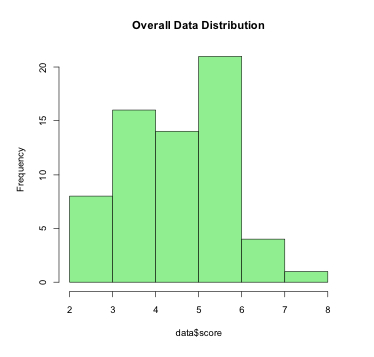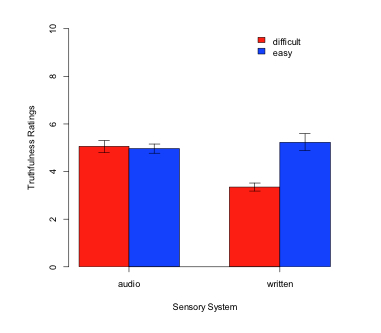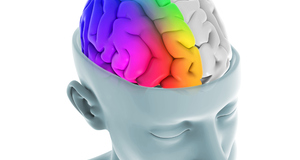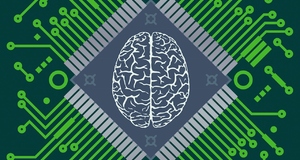Featured Article:The Effects of Processing and Sensory Systems on Perceptual Fluency
By
2012, Vol. 4 No. 06 | pg. 1/2 | »
IN THIS ARTICLE
KEYWORDS
AbstractSupposing that there is in fact a concrete relationship between perceptual fluency and the processing and sensory systems by which we process speech, human beings could single-handedly alter the way in which everyone from elementary school children to prospective employees to persons with learning disabilities acquire and integrate information, making social advancement and wellbeing more than a possibility. This paper explores the effects of processing systems and sensory systems on perceptual fluency – though more specifically focuses on the perceptual fluency of undergraduate psychology students at the University of Texas at Austin. Using a sample of 64 undergrads and a 2x2 factorial design, we did not find a significant effect in the audio sensory condition but detected a significant effect in the written sensory condition in accordance with previous studies on perceptual fluency in relation to the processing and sensory systems. With the onset of war, natural disasters and economic turbulence during George W. Bush’s two-term presidency, American citizens have begun to show a marked interest in government spending and legislation; and with an estimated $1.15 trillion of government expenditures being spent on education in the 2011-2012 calendar year alone, it may come as a quite shock to most that the average American believes the “federal government wastes 51 cents of every [tax] dollar it spends” ("Overview: The federal," 2012; Jones, 2011). In the case of education, however, this sentiment may ring true as the United States is currently lagging behind other industrialized nations on a comparative scale of academic performance ("Fast facts," 2011). A reported 1.2 million students at minimum are expected to drop out annually while each dropout costs the U.S. approximately $192 billion of lost tax and income money ("Statistics on american," 2012). Supposing that we could develop learning programs to enhance each student’s capacity for grasping material – that is, to heighten their perceptual fluency in acquiring and interpreting knowledge at an earlier age – the United States government could possibly redirect much of its funding towards other programs of concern. Perceptual fluency – or rather, the ease with which one processes information – has become a topic of interest in recent studies. Among these we find that perceptual fluency has been evaluated within the context of judgments of truth as in the 1999 study of Rolf Reber and Norbert Schwarz (Reber & Schwarz, 1999). To separate the effects of processing fluency from that of exposure frequency, Reber and Schwarz (1999) implemented an experimental design with a single-exposure procedure in which a series of statements were presented to college students with Macintosh computer screens and in varying colors against a white background that made them more or less easy to process. Similarly, in 1985, Marie Carroll, Brian Byrne and Kim Kirsner published four experimental findings outlining a distinction between autobiographical memory and perceptual memory (Carroll, Byrne & Kirsner, 1985). Each experiment was fashioned according to the age group of the sample population (as each experiment catered towards different age groups) and required participants to engage in a series of pictorial tasks in which the speed and accuracy of image-naming was assessed so as to extend its study of perceptual memory to the inclusion of the illiterate population as well. More recently, in 1995, Anna Bullock Drummey and Nora Newcombe examined children’s explicit and implicit memories for pictures in relation to perceptual facilitation (Drummey & Newcombe, 1995). Drummey and Newcombe (1995) divided their participants between two studies – the first of which aimed to assess the memory and recall of 3-year-olds in identifying pictures that were blurred replications of those seen 3 months prior on their first visit, and the second aimed to assess the processing fluency of participants ages 5 to adulthood in identifying these same blurred pictures but with no prior visit in which pictures were displayed in full and with reasonable clarity.Yet while these three experiments have provided us with substantial gains into a deeper understanding of the human mind and how human beings from infancy to adulthood process truth and memories, these experiments neglect to consider that information is not singularly dispensed by visual mediums and that the clarity of perceptual fluency should be examined under the auditory sensory system as well. It is from here that we depart and call into question which is a more effective means of information dispensation – or indirectly, a more effective means of knowledge acquisition – and in what way, we wonder, do the processing and sensory systems come into play. For the purpose of this experiment, the perceptual fluency of undergraduate students was measured according to the manipulation of three independent variables. Our first independent variable of interest was the audio sensory system – that is to say, participants were examined by the audio presentation type in which a prerecorded female voice articulated true and false statements. The second independent variable of interest was the written sensory system. In other words, participants were evaluated under the visual presentation type in which each statement appeared on a projection screen. The third independent variable of clarity could fairly be divided between the first two independent variables, as students were assessed as to the level of clarity under both the audio and written presentation types. Clarity of the audio presentation model was manipulated to articulate speech in poor or high quality – or more specifically, the prerecorded speaker either spoke fluidly or with slightly garbled intonations. Clarity of the written presentation model was also manipulated to either poor or high quality – in particular, the statements appeared on a projected screen with either high or low resolution and against a dark grey or white background in varying font types. Albeit, while the audio sensory system is the older method of dispensing information and rhetoric to human beings, I presumed that participants assigned to the written sensory group would demonstrate greater perceptual fluency when compared to that of the audio sensory group within the experiment as modern technological devices have made visual perceptual fluency the normative means of acquiring and dispensing information. Likewise, I presumed that participants assigned to the easy processing group would demonstrate greater perceptual fluency than those assigned to the difficult processing group as the manipulated presentation models are specifically designed to challenge each participant’s perception of the statements given. MethodsParticipants. Sixty-four participants were collected from a pool of undergraduate students enrolled in Statistics & Research Design (PSY 418) classes at The University of Texas at Austin. Participants were divided between two sensory groups, in which stimuli was presented by auditory or visual means. The sensory groups were even further divided (and randomly) between easy and difficult processing groups, in which the clarity of the auditory or visual stimuli varied as either clear or partially clear. Ages of students ranged between 17 to 36 years and included both males and females. The sample also included students of Asian, Black, foreign, and Hispanic descent but primarily consisted of in-state, middle-class, Caucasian students majoring in psychology. Materials. Students were presented with a series of 20 statements (see Appendix) by either auditory or visual means. Statements such as “There are 118 ridges on the U.S. dime.” or “A cat has 32 muscles in each ear.” were detail-specific and uncommon facts or falsities which students were then asked later to rate on a scale of 1 – 10, with 1 measuring the greatest likelihood of the statement being false and 10 measuring the greatest likelihood of the statement being true. Half of the statements presented were true, while the remaining half of the statements were false. Responses were collected by survey sheet, in which students circled a number on each scale corresponding to their perception of the strength of validity in each statement. Participants assigned to the audio sensory group were presented the series of statements by listening to a recording of the said statements through Windows Media Player. Participants within the easy processing group of the audio sensory group, however, were acquainted with the statements through a clear female voice recording; whereas, participants within the difficult processing group of the audio sensory group were introduced to the same series of statements but through a female voice recording whose vocal register had been distorted by adjusting the frequency of the sound waves so that her speech was a little more challenging for students to interpret in conjunction with the apparent challenge of interpreting each statement’s strength of validity. Participants assigned to the written sensory group were presented the same series of statements by viewing individual slides for each statement through the Microsoft Office PowerPoint 2007 Program. Participants within the easy processing group of the written sensory group, however, viewed each statement in black, Times New Roman, size 60 font against a white screen with a resolution of 1024 x 768; whereas, participants within the difficult processing group of the written sensory group viewed the same series of statements in black, Haettenschweile, size 60 font in bold against a dark grey screen with a lower resolution so that students would find more difficulty in interpreting each statement and its strength of validity. All statements were placed at the center of each slide. The experiment used a 2x2 factorial design, in which the independent variables of processing system and sensory system (further divided between poor and reasonable clarity) were used to measure the dependent variable of perceptual fluency. Procedure. Students were asked upon their arrival to class to take a seat and a sheet of paper with 20 numerical scales with each scale ranging from 1 to 10. Two minutes after the class session had begun, students were instructed to rate the following statements they would be presented and to measure the strength of validity of each statement on a scale of 1 – 10 by recording their responses on the scale number that corresponded to the statement number in order of appearance. Easy and difficult processing participants assigned to the umbrella audio sensory group then listened to the recordings of 20 statements as spoken by the female speaker with an interim of 30 seconds between each statement and recorded their answers on the survey sheet. Easy and difficult processing participants assigned to the umbrella written sensory group, on the other hand, viewed a PowerPoint presentation of each of the 20 statements on individual slides with an interim of 30 seconds between each slide and likewise recorded their answers on the survey sheet. Survey sheets were then collected by the administrator, who afterward debriefed the students on their participation in a perceptual fluency study. All studies were administered in PSY 418 laboratories under graduate teaching assistants from The University of Texas at Austin.Continued on Next Page » Suggested Reading from Inquiries Journal
Inquiries Journal provides undergraduate and graduate students around the world a platform for the wide dissemination of academic work over a range of core disciplines. Representing the work of students from hundreds of institutions around the globe, Inquiries Journal's large database of academic articles is completely free. Learn more | Blog | Submit Latest in Psychology |





















